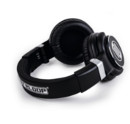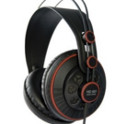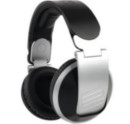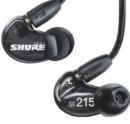How to choose headphones

It's obvious that ordinary plugs from a smartphone or headphones for talking over Skype are unsuitable for work with music in a home studio. Therefore, we have some advice for buying headphones ideal for work with music.
TIPS FOR BEGINNERS:
Although a different type of headphones is ideal for each activity and no headphones exist that would be perfect for all activities, some functions can be combined without bigger problems. If you want to use headphones for mixing and recording, it is best to buy high quality closed-back studio headphones If you would like to talk with our experts about choosing headphones, call our customer line at 169 941 99 (We're not available on the phone now), or send us an email to .
Studio headphones
Studio headphones are designed for work with music, mixing and mastering, which is ideal when travelling and also in your home studio when you don't want to disturb others. For mixing you will need headphones with an adequate frequency range of, say, 30 Hz až 20 kHz, or better yet, when they will also extend into the inaudible spectrum and transmit sound in the range of 18 Hz to 23 kHz and higher. The greater the range, the more balanced and faithful the sound in the audible spectrum. When mixing, it is necessary to hear the bass and treble well and to have a balanced frequency character. The headphones shouldn't emphasise a certain frequency and create a false impression of the recording sound.
If you plan to record vocals or solo instruments in the studio on a final medium, it is important that you not only hear the foundation and yourself well, which is a matter of the headphone mix, but that the sound does not escapefrom the headphones. If the microphone also captures the sound from the headphones, including the metronome click, the recording is worthless. That is why closed-back headphones are used for recording. They also cover your entire ear and provide maximum protection against the escape of sound.

When working with music and while mixing, it is important that your headphones provide the best possible response. Open and semi-open headphones with a broad frequency range are ideal for this purpose. The sound produced by these headphones does not strike against a closed construction and is therefore more faithful than with closed-back headphones, which tend to create false low frequencies.

DJs need headphones that fit well, as they will be wearing them for a long time. For example, if they use them to set the needle to a certain point on a record, it is essential that the headphones fit well so sound does not escape. Therefore, DJ headphones are typically closed-back and high-performance.
There are also times when a DJ needs to simultaneously hear the sound in the hall and what they are playing into their own headphones. DJ headphones with reversible earcups are useful in this situation. In one ear the DJ hears the sound from the mixer, in the other the sound from the hall.

Headphones for concerts have become increasingly popular in recent years. Especially drummers, who want to hear what other band members are playing while hearing themselves on their monitor at a lower volume. Singers, who often move away from their stage monitor, also appreciate in-ear monitors. In-ear monitoring is therefore a convenient system that sends an ideally set ratio of instruments (vocals) not to the stage monitor speaker but straight to the musician's ear.
In-ear monitoring requires well-shaped earplugs so the musician hears only what the sound technician sends them undisturbed by the loud sound of the drums and guitars. Another advantage for singers is that in-ear monitoring resolves common problems with feedback.
Other important parameters to bear in mind
If you plan to use your headphones both in the studio and at home and will also travel with them often, it is useful if they can be partially folded up and have a case.It is also useful if they have a replaceable cable and replaceable pads so you don't have to toss your headphones just because the pads are worn from frequent use, or send them for service because the cable has split.
On the other hand, you don't have to worry about the connector, as most headphones come with an adapter that allows you to plug into 3.5 mm and 6.3 mm jacks.





